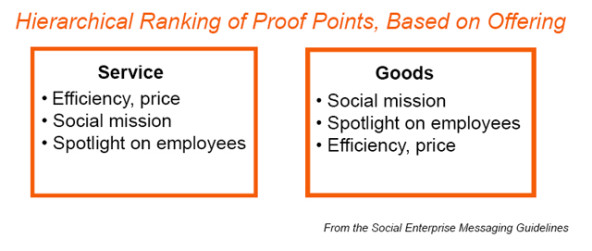What’s in a name? Think “empowered,” “do over,” “book smart,” and “employment rights.” These terms were just added to the dictionary last year. Each one evokes a clear concept that we understand without much more description. But just a decade or two ago—not so much.
How about social enterprise? The meaning is not yet clear, even to those within the sector, as it is still a nascent but growing field. But we believe clarity is important, because one of the biggest challenges to growth so far has been finding and evangelizing a cohesive message.
I remember being inspired by the seminal SSIR article “Social Entrepreneurship: The Case for Definition,” which argued that if we don’t define social entrepreneurship, we “run the risk of giving the skeptics an ever-expanding target to shoot at … ”
“Social enterprise” is distinct from “social entrepreneurship,” but it is a common source of confusion.
Are you enjoying this article? Read more like this, plus SSIR's full archive of content, when you subscribe.
The social enterprise field demonstrated its ability to “preserve the meaning of social enterprise” last year when the company Salesforce briefly used the term to describe itself—as an enterprise offering a technology platform that creates a set of “social relationships”—before ceding the territory to others.
To build on this momentum, REDF commissioned the communications firm APCO Worldwide to do an extensive social enterprise messaging study, with the aim of sharpening the definition. More than 60 survey participants and 15 interviews with leaders across multiple sectors provided revealing comments that informed our final product.
There was widespread agreement on this concise definition: Social enterprises leverage a business approach to address a social issue.
Those surveyed used these descriptors: business rigor, problem-solving, cost-effective, sustainable, innovative, and measurable impacts. They also noted that social enterprise addresses issues like the environment, health, education, community development, products for market niches not addressed by the mainstream, and employment of people who otherwise would not be able to get jobs. As part of REDF’s Social Enterprise for Jobs (SE4Jobs) network, which includes more than 300 organizations in the social enterprise field focused on employment, the message is even more pointed: Our social enterprises are mission-driven businesses focused on hiring and assisting people who face barriers to work.
Of course, just as important as defining what a social enterprise is, is defining what it is not:
- It is not any nonprofit doing innovative work. Both social entrepreneurship and social innovation are broader terms that reflect new approaches to addressing social problems, not necessarily via an earned-income business approach.
- It is not all businesses with charitable campaigns or with social outcomes. While important, businesses that simply donate to charitable causes or whose core business happens to also achieve some positive social outcomes are not social enterprises. A core focus on achieving (and measuring) the social impact of the organization is crucial.
With this broader definition in hand, we wanted to go one step further and develop audience-specific messaging that could help the field communicate in a meaningful way to businesses, customers, government, and funders. Here are the stakeholder messaging recommendations we came up with:
Businesses (B2B)
Great social enterprises speak in business terms to other businesses and can demonstrate success as it relates to customers, sales, and the bottom line. Highlight the fact that sourcing from social enterprises can enhance the brand, and add appeal for both consumers and employees.

Depending on whether your social enterprise is selling a service to a business customer or a tangible product directly to a consumer, emphasize different aspects of your work. If you are selling artisanal goods, for example, which people generally do not consider a necessity, differentiate your business by putting social mission at the forefront. If you are offering a service that will compete for business customers, focus on efficiency and the solution you provide.
Consumers (B2C)
Aim to exceed consumer expectations, including taste, quality, service, and price. Showcase how consumers are not only receiving a better product, but also helping society at large. The Buy Social Campaign in the UK highlights both the product’s features and its impact on society. The campaign has garnered support from government officials, including Prime Minister David Cameron and Business Minister Joe Swinson.
Government
Those in government that take the time to understand social enterprise get behind it. Social enterprise can appeal to government stakeholders on both sides of the aisle, due to its emphasis on leveraging business acumen to address pervasive societal issues in a cost-effective and scalable way. Use data to support the case for what works.
Funders
Target your outreach based on issues of mutual interest, and align your communications with funder focus areas. Additionally:
- Focus on the use of business strategies and results to achieve catalytic or ripple effects (on the economy, health, and so on) for the people that the foundation focuses on.
- Highlight the fact that social enterprise uses an earned-revenue model to offset program costs, making them more sustainable.
- Combine numbers with personal stories.
- Emphasize exceptional cross-sector leadership. Note that the business culture allows leaders to admit failure and learn from it.
With a united voice, we can build a viable and vibrant movement and get people behind this valuable and effective model of solving some of our biggest societal issues. Read the full Social Enterprise Messaging Guidelines here.
Support SSIR’s coverage of cross-sector solutions to global challenges.
Help us further the reach of innovative ideas. Donate today.
Read more stories by Carla Javits.

